
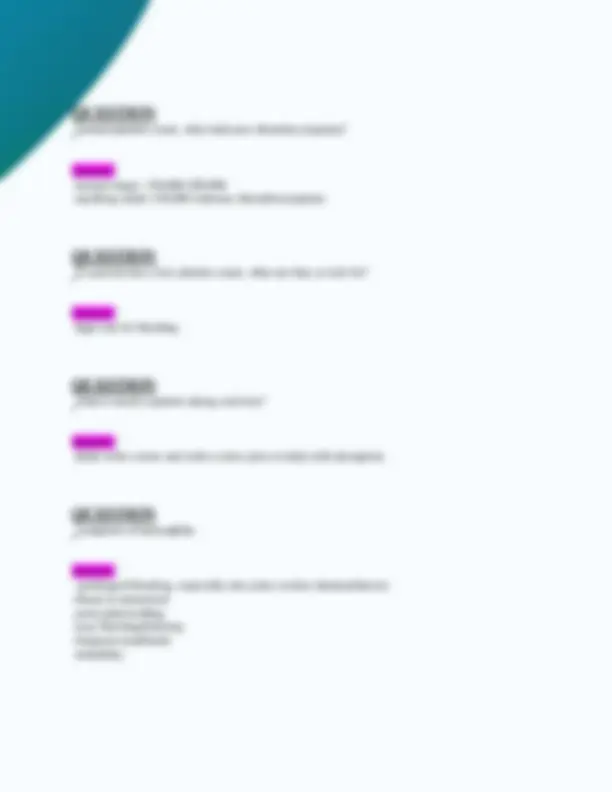
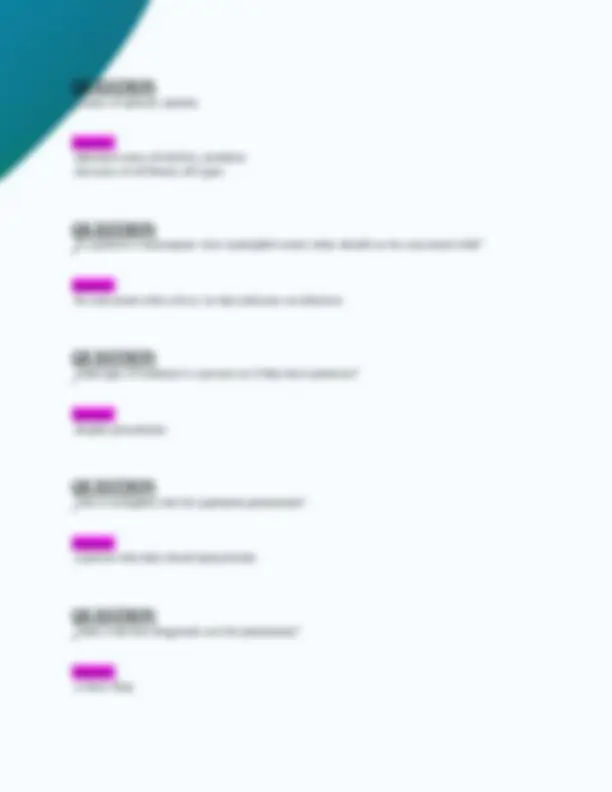
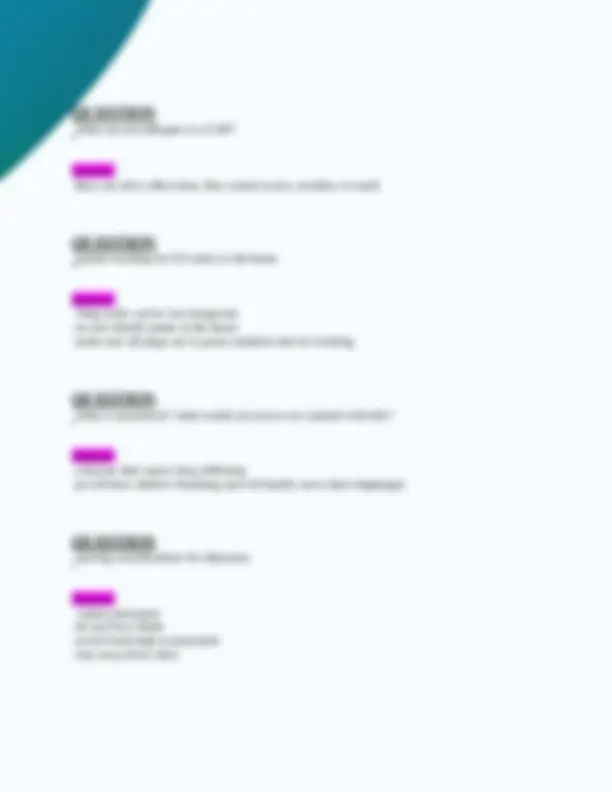
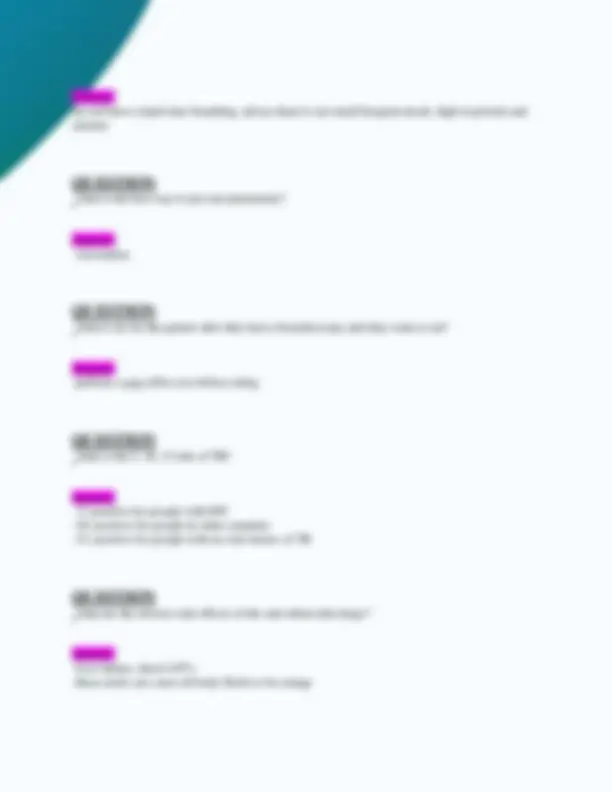
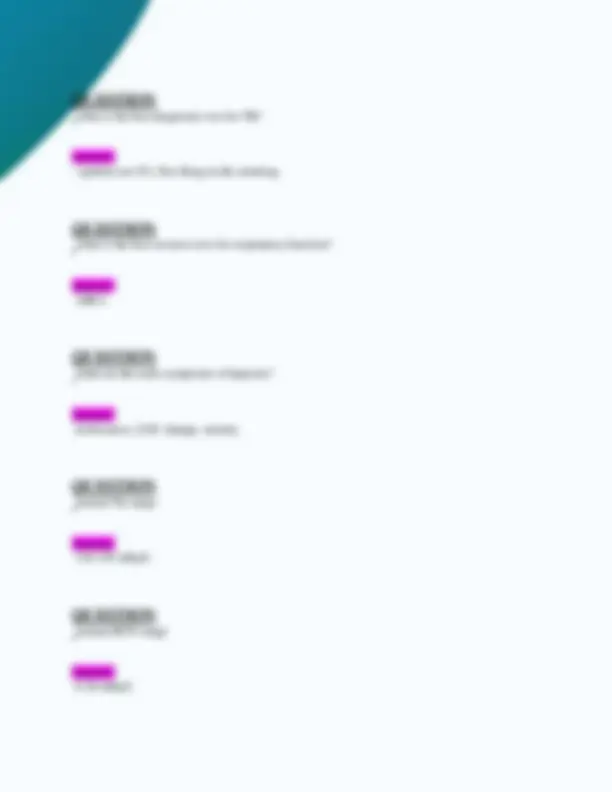
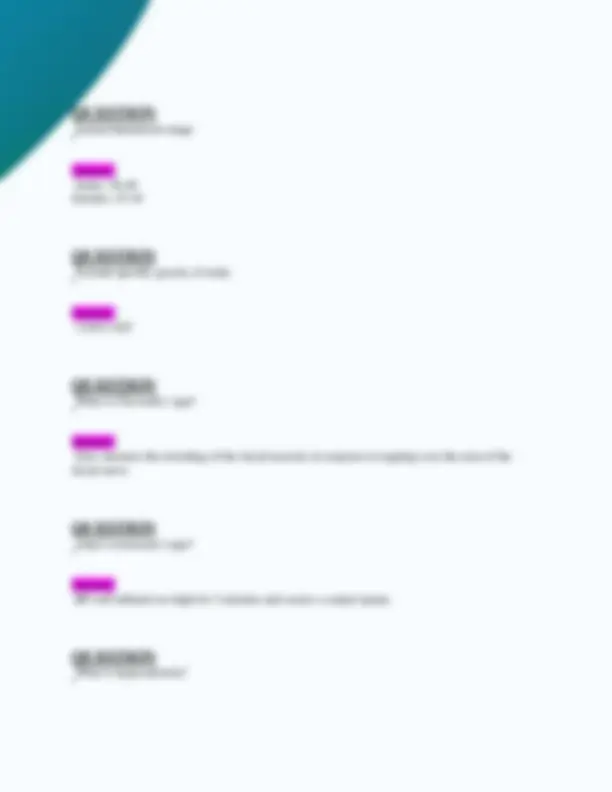


Study with the several resources on Docsity

Earn points by helping other students or get them with a premium plan


Prepare for your exams
Study with the several resources on Docsity

Earn points to download
Earn points by helping other students or get them with a premium plan
Community
Ask the community for help and clear up your study doubts
Discover the best universities in your country according to Docsity users
Free resources
Download our free guides on studying techniques, anxiety management strategies, and thesis advice from Docsity tutors
Exam 2: NUR201/ NUR 201 (New 2025/ 2026 Update) Medical Surgical Nursing I Review | Questions and Verified Answers| 100% Correct| A Grade – Fortis
Typology: Exams
1 / 11

This page cannot be seen from the preview
Don't miss anything!







what kind of precautions are people with TB? Answer: airborne isolation
for a patient with sickle cell anemia, how do you manage the crisis? (3 ways) Answer:
patient with pleurisy, what to give them and why? Answer: give patient a pillow for splinting, they can cough and hold onto it while doing so to reduce pain
what will you assess on a patient with TB?
Answer:
if you suspect a patient has TB, what should you do? Answer: put them on airborne precautions right away
what is the normal ABG's for a good O2 saturation? Answer: PaO2= 80 - 100
what is multiple myeloma? Answer: cancer of plasma cells in bone marrow
difference between Hodgkins disease vs non-hodgkins disease Answer: Hodgkins disease has Reed-Sternberg cells which are found in the lymph nodes
causes of aplastic anemia Answer: inherited stem cell deficit, insidious
if a patient is neutropenic (low neutrophil count) what should we be concerned with? Answer: be concerned with a fever, bc that indicates an infection
what type of isolation is a person on if they have pertussis? Answer: droplet precautions
who is at highest risk for aspiration pneumonia? Answer: a person who had a head injury/stroke
what is the best diagnostic test for pneumonia? Answer: a chest Xray
what can you delegate to a UAP? Answer: they can only collect data, they cannot assess, monitor, or teach
patient teaching for O2 safety in the home Answer:
what is sarcoidosis? what would you assess on a patient with this? Answer: a disease that causes lung stiffening
nursing considerations for aldactone Answer:
blood transfusion reactions Answer: fever, chills, hives, itching, back pain
who is at the most high risk for a DIC? Answer: a patient with sepsis (high temps/infection)
what is the treatment for pernicious anemia? Answer: Treat with B12 injection IM or IV
symptoms of RBC anemia Answer:
nursing teaching for pt with pneumonia regarding teaching
Answer: pt will have a hard time breathing, advise them to eat small frequent meals, high in protein and calories
what is the best way to prevent pneumonia? Answer: vaccination
what to do for the patient after they had a bronchoscopy and they want to eat? Answer: perform a gag reflex test before eating
what is the 5, 10, 15 rule of TB? Answer:
what are the adverse side effects of the anti-tuberculin drugs? Answer: liver failure, check LFT's
normal hematocrit range Answer: males: 39 - 49 females: 35 - 45
Normal specific gravity of urine Answer: 1.010-1.
What is Chvostek's sign? Answer: (low calcium) the twitching of the facial muscles in response to tapping over the area of the facial nerve
what is trousseau's sign? Answer: BP cuff inflated too high for 3 minutes and causes a carpal spasm.
What is hypocalcemia?
Answer: low calcium levels in the blood